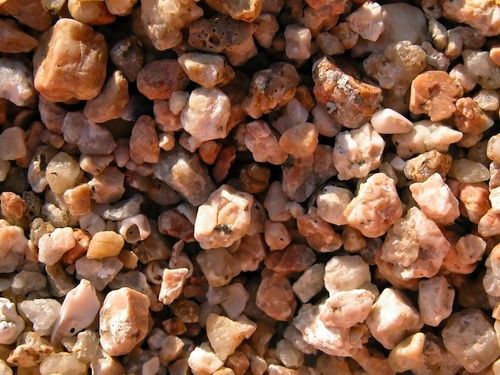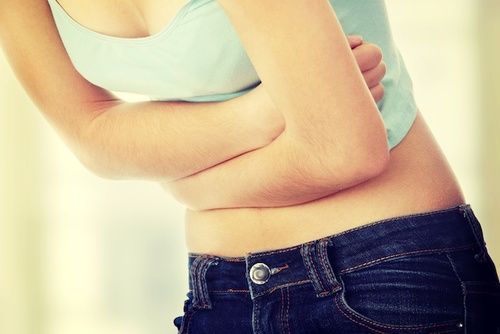Kidney stones: symptoms, causes, all remedies
Kidney stones are inorganic material mainly calcium from concentrated starches, which forms concretions in the kidneys. The male population is three times more likely than women to develop urinary tract stones. A diet rich in salt and more generally in sodium increases the urinary excretion of calcium and reduces the pH of the urine and the excretion of citrate, thus favoring the formation of calcium oxalate kidney stones.
An image of kidney stones

Symptoms of kidney stones
Symptoms of kidney stones can be highly variable. Pain can come when the stone moves into the urinary tract, obstructing the flow of urine. Sometimes the painful cramp can involve the back and hips, extending to the groin area .
If the stone cannot pass easily, the muscles in the ureter contract, pushing it towards the bladder. The pain becomes more intense and blood may appear in the urine. People may feel that they need to urinate more frequently and may feel burning when urinating.
Other symptoms can be fever , chills , nausea and vomiting.
Discover all the natural remedies for nausea

Causes of kidney stones
The factors that contribute to the formation of kidney stones can be many. Among them, the most common are:
- Diet. A diet rich in foods containing oxalates, such as spinach, chard, chocolate, black tea, or taking vitamin C and D supplements, can be a possible cause of stone formation.
- Reduced fluid intake. Drinking little water promotes the deposition of calcium oxalates in the urinary tract.
- Lack of citrates and vitamin B; of magnesium and enzymes that protect the urinary tract.
- Genetic and / or hormonal factors.
- Excess sodium, which leads to an increase in calcium concentration.
- Intestinal dysmicrobisms.
- Short bowel syndrome.
Diagnosis
The diagnostic techniques used to make the diagnosis are:
- Ultrasound , able to identify possible dilations of the kidney and urinary tract or the presence of stones in the kidney cavities.
- Radiography , which is not effective in the case of uric acid or cystine stones (transparent to X-rays) or the proximity of the stones to the skeletal system.
- Urography (or pyelography ), a more sophisticated examination that uses a contrast agent to precisely locate the location and nature of the stone .
- The spiral CT scan , effective and resolving with respect to any doubts.
The treatment approach to urinary stones depends on the size of the stone and where it is located in the kidneys . In general, a specific diet should be adopted to combat kidney stones .
CARE FOR KIDNEY STONES
Nutrition to counteract kidney stones
In kidney stones, the first indication is to drink a lot of mineral water. The classic indications of drinking at least 2 liters of water a day cannot be considered appropriate for everyone since in predisposed subjects they could lead to unnecessary kidney fatigue. The water to be taken concerns, in addition to that mentioned, above all the vegetation water contained in diuretic foods : fish, rice, onion (excellent in renal drainage, it can be used in all its forms: raw, added to salads, boiled, grilled, au gratin, in omelette, etc ..), raw and cooked chicory, raw and cooked fennel, celery, cucumbers, Belgian endive , agretti, asparagus, radishes, chicory, raw artichokes, raw cabbage , raw cauliflower, boiled and unseasoned potatoes, pineapple, strawberries, mandarins , melons, watermelon, peaches, grapes, cooked and raw apples, raspberries, bananas.
Among the foods useful for fighting kidney stones there is also the alchecheng whose acids contained in the fruit are able to prevent the formation of kidney stones and help dissolve those already existing.
Avoid foods containing calcium and oxalates , such as cheeses and tomatoes, and all antidiuretic foods : meat, pasta, spinach, cooked cauliflower, cooked cabbage, beets, courgettes, turnips, broccoli, broccoli, aubergines , peppers, cooked artichokes, radicchio , pears, pomegranates, persimmons, apricots, plums, figs, cherries, avocados, papayas, citrus fruits.
On the other hand, foods such as coral beans are recommended, which have purifying properties for the kidneys , and can be a good alternative to diuretics in cases of arterial hypertension or water retention.
In the acute attack of renal colic it is possible to relieve the spasm by using a light and not very sweetened chamomile (brown sugar is preferred) drunk in sips during the painful contraction.
You can learn more about nutrition to prevent and fight kidney stones
Herbal remedies for kidney stones
The roots of restharrow ( Ononis spinosa ) are excellent for kidney stones , the leaves of the stonecutter ( Phyllanthus niruri ) and the aerial parts of the parietaria ( Parietaria officinalis ) are able to break up the mineral formations; to maintain bacterial levels within normal values in the genitourinary tract and to relax the smooth muscles of the urinary tract, in order to facilitate the expulsion of stones in a less painful way. These plants also have antiseptic properties against possible urinary and diuretic infections; while the corn stigmas ( Zea mays) have an analgesic action against painful symptoms in urinary tract diseases, therefore it is recommended as an adjuvant against kidney stones (uric, oxalic and phosphatic), it favors the elimination of crystals and small kidney stones through diuresis, while also reducing the inflammatory phenomena of the urinary system. All can be taken in herbal teas, mother tinctures or dry extracts.
Among the gemmoderivati we remember the Beech ( Fagus sylvatica ) used as a renal drainage in metabolic disorders and in renal lithiasis, together with the Birch ( Betula Verrucosa lymph ) .
Bach flowers for kidney stones
Physical pathologies such as the production of kidney or biliary stones are not treated directly with Bach flowers: these remedies act mainly on the emotional state, which leads to the onset of a certain disorder .
However, flower therapy can assist with pharmacological therapy, intervening on psychic imbalances linked to the formation of aggregates of cholesterol or minerals or thickened bile, which are deposited in the bile ducts and in the gallbladder. These organs become blocked by something that always reflects too much, too much (too much fat, too many toxins, etc.). The disease is an expression of the fact that the individual ingests more than he can process and therefore manifests itself in the case of immoderation, excessive expansionist desires and too high ideals.
Fear is connected to the kidney, however: the accumulation of fears or hard thoughts about oneself can lead to the formation of stones. Personalized blends will have to take these similarities into account to change character attitudes or negative emotions, in order to promote physical healing of the disorder.
Traditional Chinese Medicine
In traditional Chinese medicine the Kidneys (Shen) are combined with the Water Movement and simultaneously are the original seat of Water but also of Fire. For this reason the lyrics speak of Rene Yin and Rene Yang.
The Kidneys are the abode of the Jing , they produce the marrow, they fill the brain, they control the bones. They also receive vital energy from the Lungs, are the backbone of the organism and manifest themselves in the general vitality of the hair (although there is caution in interpreting this data, which may depend on factors unrelated to renal energy).
Aromatherapy for kidney stones
In aromatherapy, the use of essential oils with anti-inflammatory action can help soothe the painful component of this disorder. These oils can be diluted (5-7 drops) in a little almond oil or other vegetable oil and applied directly to the skin at the kidneys and massaged until absorbed.
- Chamomile essential oil : helps to relax tense muscles due to nervousness, irritable bowel, spasms, colitis and gas colic of newborns. Gives benefit for menstrual pains and for those caused by the expulsion of stones by the body. its use is mostly due to its anti-inflammatory properties.
- Lavender essential oil : it is one of the most used essential oils in the treatment of pain caused by muscle spasms, dysmenorrhea, stones, for its spasmolytic and anti-inflammatory action.
- Rosemary essential oil : it is used effectively as a powerful anti-inflammatory, if massaged, it relieves arthritic and muscular pains, dissolves uric acid and crystals that harden the epidermal tissues forming edema, swelling and water retention, muscle pain, and stones and colic at the biliary tract .
Homeopathy
We always advise you to rely on your trusted homeopath, because kidney stones should not be underestimated at all. In the presence of kidney stones , Pareira brava D3 is preferably used in homotoxicology , in preparation associated with Cantharis D5, Acidum nitricum D4 and Plumbum aceticum D6 . The dosage is one tablet 3 times a day for one month. To this is associated a useful remedy to control any inflammatory processes in progress, namely Berberis diluted several times and associated with Colocynthis and Veratrum album for spasms and colic).
Usually administration includes 10 drops of each of the medicines 3 times a day for no more than 4 weeks.
Exercises in case of kidney stones
Movement and constant training are essential to prevent kidney stones, especially if there are factors such as heredity, genetics and / or predisposition. Constant sporting activity is recommended, without reaching high intensity, especially for those predisposed to kidney stones; some endurance sports (running, walking, triathlon, etc.) if pushed to excess (for example more than 70-80 km per week) favor the turnover of football (faster bone remodeling) and therefore add up as factors other than predisposing ones.
But what really makes the difference is hydration . Especially when you sweat a lot, you need to drink to replenish the lost salts.
It seems trivial, ironic and useless, but here is the first real remedy to safeguard kidney function: rethink the evacuation as a ritual, take all the time necessary. It is important to flush the intestines at least once a day. In this sense, also to give relief to the abdominal area, all movement therapies that involve the diaphragm and pelvic floor in phases of relaxation and awareness are welcome.
If you love to dedicate yourself to yoga techniques, choose asanas that facilitate the elimination of toxins such as the famous Bhujamgàsana or cobra position (which, in addition to the kidneys, also tones the ovaries and uterus) or partial Makiasana or crocodile rest.




























+ There are no comments
Add yours